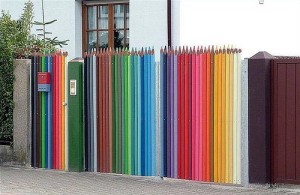 In William Cronon’s book, Changes in the Land – Indians, Colonists, and the Ecology of New England, he painstakingly investigates the multitude of uses versus non-uses that the American landscape has endured and the resulting changes it has weathered – uses that were imposed for sustainable, cultural, economic or belief-system reasons. In among the eco-ethnological interactions that he discusses (and it is all engaging), what stood out when I first read the book about 15 years ago and what still floors me is the concept of bounding and separating land – something we just take for granted now. Fences.
In William Cronon’s book, Changes in the Land – Indians, Colonists, and the Ecology of New England, he painstakingly investigates the multitude of uses versus non-uses that the American landscape has endured and the resulting changes it has weathered – uses that were imposed for sustainable, cultural, economic or belief-system reasons. In among the eco-ethnological interactions that he discusses (and it is all engaging), what stood out when I first read the book about 15 years ago and what still floors me is the concept of bounding and separating land – something we just take for granted now. Fences.
As a long-time admirer of fences and walls, I was made aware of their origins, purpose and form after having studied landscape history and reading this book. Walls and fences were the first renderings of physical boundaries in the New World (copied of course from the Old World), and their introduction into the environment gave glimpses of the land divisions and sub-divisions yet to come in the ravenous and commodious future. These first fences must have boggled the minds of Native Americans considering that theirs was an open, borderless landscape.
Cronon says that fences were the result of “an effort to control the relationship between domesticated animals and crops.” So, fences became “not only the map of a settlement’s property rights, but its economic activities and ecological relationships as well.” Gardens were separated from cornfields, meadows from pastures – divisions of labor and purpose that ended up repurposing the land’s ecosystems with fixed ideas about boundaries and use, as well as a proprietary stamp.
As the acreage was sliced and diced, the fences and walls became the three-dimensional lines drawn. Nearly 400 years later, fences abound. They exist in every type of landscape imaginable, often more for keeping human animals within or without spatial delineations, and still, in rural settings, to keep both wild and husbandry animals separate from domestic crops. But they also have become a design element on the land; a way of expressing something about where your place is situated, or perhaps, where you would like it to be situated, or how you might want to locate it in some meaningful historical context, or disconnect it from a lousy neighbor, or maybe, just keep dogs from peeing on it. It is quite rare to see an unfenced property except in what we call wilderness areas. Fences now, just as in Colonial times, are a sign of an “improved” property. This begs the question: Are the fences themselves improved?
Fences are mostly purely functional, but they can also be stylish or even whimsical. Sometimes I think the whimsical ones are trying to give something back while they take away access – an apology of sorts. I am intrigued by the artful choice of materials, the spacing of the upright pieces, the height, the mass, and I am especially wowed by a curved fence or wall, because, let’s face it, most everything in the world of real estate is rectilinear. Curviness is unnecessary, unless circumnavigating something round like a tree, and because of that it is extraordinary; plus, it takes someone skilled to build a curve well.
When a property owner puts some character into a fence, when a fence expresses something about its site or the site’s inhabitants – that’s when it gets my attention, when it is not merely a boundary but an artistic endeavor. It is the evolution from a functional accessory into something that is personal and unique and which provides placeness, that makes me pause to ponder it, not the prefab sections from the home-improvement store. Fences can be aesthetic statements, they can be clever or just plain fun. They can be made from fabricated materials or found ones. Because there is no mandate to go the extra bit beyond standard fencedom – to make something protective so attractive or eye-catching – that is why it is so noteworthy; creating an underline or outline, rather than just a line.






